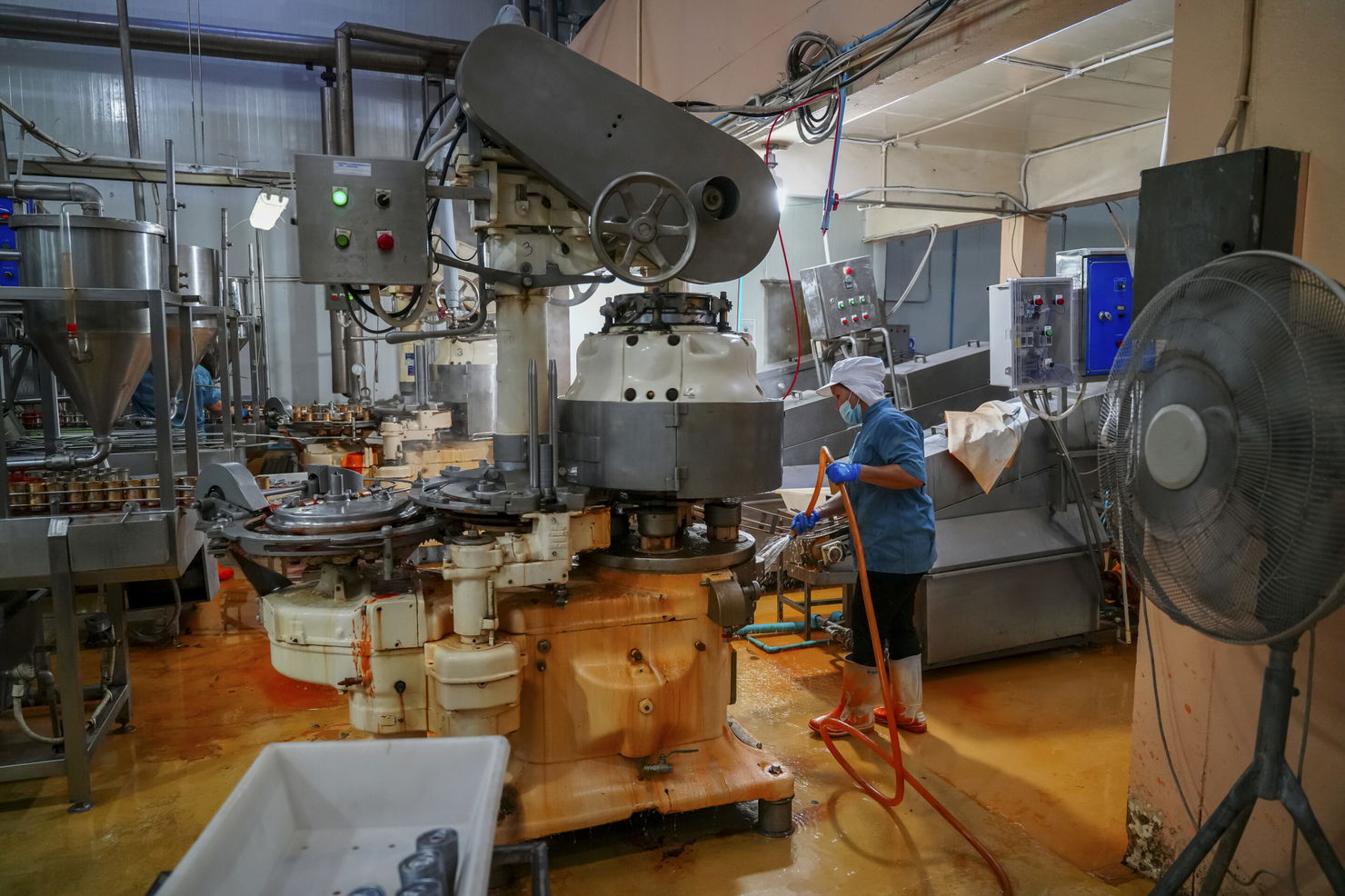The Financial Abyss Most Industrialists Underestimate
When a production line stops, money evaporates. Every minute of unplanned downtime represents
According to the Siemens report “The True Cost of Downtime 2024”, the world’s 500 largest companies lose around $1,400 billion a year to unplanned downtime, or 11% of their total sales. This amount has increased by 62% compared to the 864 billion recorded four years earlier, a critical situation that far exceeds inflation.
In this article, we’ll explore the financial consequences of downtime and provide you with the tools to accurately calculate your losses. For CFOs and COOs, understanding the true cost of down time is not just an operational concern – it’s a strategic imperative that has a direct impact on EBITDA and company finances.
Average cost of machine downtime by sector
The cost of an hour’s downtime varies considerably depending on the sector, the size of the company and the complexity of the production process. Aberdeen’s research indicates that a typical manufacturing company loses around $260,000 or around €240,000 per hour for each hour of downtime. However, this average cost of down time can range from a few thousand to several million, depending on your sector.
The Calculation Formula: Precise Management of Production Losses
To calculate your downtime costs accurately, you need to account for both direct and indirect expenses. Here’s the complete formula used by the most successful manufacturers when it comes to cost management:
Total Downtime Cost = Direct Costs + Indirect Costs
Calculating loss of direct sales
The simplest component measures the value of lost production as a function of outage duration:
Production losses = (Units/Hour) × (% Productivity Impacted) × (Margin/Unit) × (Hours Downtime)
For example, if your line produces 1,000 units per hour at a margin of €10 per unit, and a breakdown brings production to a complete halt for 2 hours, your direct loss of sales is €20,000.
Maintenance and labor costs
Your staff doesn’t stop costing money when the machines stop working. Maintenance costs add up fast:
Labor cost = (Hourly rate × Number of operators assigned × Hours of downtime)
Don’t forget to add overtime costs when crews have to catch up on production – a common scenario that can inflate labor costs by 50% or more. Planning errors in team management further amplify these expenses.
The Complete Formula for Downtime Cost Management
Combining all the elements, your complete calculation looks like this:
Stopping Cost = (Duration × Cost/Minute) + Lost Sales + Overtime + Reputation Impact
For a quick estimate, Atlassian’s research suggests using 400 euros per minute for SMEs and 8,500 euros per minute for ETIs and large corporations as a benchmark.
Hidden Consequences and Long-Term Impact on Profitability
The production losses you can calculate directly often represent only 60-70% of the real impact of downtime. According to Ponemon Institute research, the largest share of the cost of downtime comes from business disruption – a category encompassing reputational damage, lost customers and missed long-term opportunities.
Continuity in the Supply Chain
When production stops, you’re forced to draw on your safety stocks. This creates cascading problems that threaten operational continuity: urgent shipments to replenish raw materials, potential shortages for customers, and strained relations with suppliers. In today’s interconnected supply chains, Siemens research shows that a stoppage in one production process can create anomalies across your entire operation.
Impact on Customer Services and the Market
Late delivery erodes customer confidence. Repeated delays can permanently damage relationships, resulting in lost contracts and difficulties in winning new business. For manufacturers serving just-in-time lines, a single incident of downtime can trigger critical contract penalties, express shipping charges, or worse – being eliminated from the supplier list.
The Long-Term Opportunity Cost Factor
Every hour your team spends diagnosing and repairing equipment problems is an hour not spent on innovation, process improvement or strategic initiatives. This opportunity cost compounds over time, slowly eroding your competitive edge.
Why the cost of machine downtime is rising faster than inflation
The Siemens 2024 report reveals a worrying trend: while US inflation from 2019 to 2023 was 19%, the cost of an hour’s downtime in the automotive industry rose by 113% over the same period. Several factors explain this acceleration:
Energy costs: The global energy crisis has pushed industrial energy expenditure to unprecedented levels. When production restarts after a shutdown, energy-intensive start-up procedures add significant costs.
Tensions in the labor market: skilled maintenance technicians command premium salaries. When a piece of equipment breaks down, calling in specialized personnel on an emergency basis multiplies costs.
Higher utilization rates: Many plants now operate at higher capacity, leaving less margin to make up for lost time. Without buffering, every minute of downtime has a direct impact on delivery commitments.
Poor maintenance practices: The absence of a preventive maintenance strategy remains the main cause of avoidable downtime. Poor maintenance practices cost companies millions every year in unplanned breakdowns.
Performance Indicators and OEE: Machine Downtime Management Tools
Overall Equipment Effectiveness (OEE) provides the framework for understanding how downtime affects your operation. Among the key performance indicators, the standard SRR calculation multiplies three factors: Availability, Performance and Quality.
TRS = Availability × Performance × Quality
Availability – the component most directly affected by machine downtime – measures the percentage of planned production time during which the equipment is actually running. The formula is simple: Availability = Uptime ÷ Planned Production Time.
Here’s why it’s crucial for your downtime cost calculator: if your site produces 1,000 units per day at 70% OEE with €20 margin per unit, each percentage point of improvement represents 14.28 additional units – that’s €285.60 per day or more than €105,000 annually per production line.
Most manufacturers operate between 40 and 60% SRT, while world-class plants reach 85% or more. This difference represents millions in recoverable value for a typical multi-line operation.
Maintenance Strategy and Downtime Reduction
The average industrial operator faces 800 hours of equipment downtime a year – more than 15 hours a week. Equipment failures alone account for around 42% of these downtimes. Yet Aberdeen’s research shows that 70% of downtime problems stem from teams being unaware of their equipment’s need for maintenance or upgrades.
This knowledge deficit points to one solution: real-time production management tools that give operators immediate visibility of machine status, performance trends and emerging anomalies.
Unlike traditional Excel-based monitoring, which provides a retrospective analysis hours or days later, real-time TRS monitoring enables an immediate response. When a machine starts to show performance degradation, operators can intervene before a complete breakdown occurs.
According to Siemens, a well-executed predictive maintenance strategy can reduce spare parts requirements by up to 40%, while drastically reducing unplanned downtime. Two-thirds of manufacturers have now made downtime reduction a strategic priority.
Calculate the ROI of Machine Downtime Reduction
For finance directors evaluating investments in production monitoring technology, the calculation is straightforward:
Step 1: Calculate your current hourly shutdown cost using the formulas above.
Step 2: Estimate your total annual hours of unplanned downtime. The industry average is 800 hours, but many plants experience significantly more.
Step 3: Apply a conservative improvement target. Most manufacturers achieve a 10-20% reduction in downtime within the first year of implementing real-time monitoring.
Step 4: Multiply the hours recovered by your hourly shutdown cost.
For a medium-sized manufacturer with €50,000 hourly downtime costs and 500 hours of annual unplanned downtime, even a 10% improvement generates €2.5 million in annual savings – typically delivering ROI within the first month of deployment.
Taking Action: From Data Management to Long-Term Improvement
Understanding your cost of downtime is the essential first step to controlling it. The formulas and benchmarks in this article provide the foundations for quantifying your current losses and building the business case for improvement.
But calculation alone doesn’t reduce downtime. Manufacturers who achieve world-class OEE combine accurate measurement with real-time visibility, enabling operators to see the truth about machine performance and react before small problems become costly breakdowns.
The difference between knowing your downtime costs and actively reducing them often comes down to a single factor: whether your team has immediate access to production data via suitable management tools, or whether they’re waiting for yesterday’s Excel report.
Ready to calculate your potential savings? Use our ROI calculator to see exactly how much downtime is costing your operation, and how quickly real-time monitoring can pay for itself.
Try the TEEPTRAK → ROI Calculator
No Results Found
The page you requested could not be found. Try refining your search, or use the navigation above to locate the post.





0 Comments